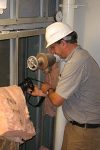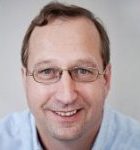
- This event has passed.
BEC Charleston Fall Symposium: Building Science 201 Part Deux with John Straube
October 26, 2016 @ 8:00 am - 5:00 pm
John Straube, Ph.D., P.Eng., Principal, Senior Building Science Specialist
Continuing Education
AIA: 7 LU/HSW
SC Building Council 5 CEUs (pending)
Certificates provided to all attendees
Cost
$150 per person
through October 23rd
($175 thereafter)
Includes continental breakfast, lunch & refreshments!
Summary

John Straube returns to Charleston for an all-day symposium on several advanced topics for building enclosures in our hot-humid climate. He will continue the discussion from last year about new construction and renovation from a building science perspective based on real world examples, code considerations, and practical solutions. Consideration will also be given to areas of specific local concern, such as historic buildings, hurricanes, and seismic-resistant construction.
Air leakage: Why should you care in a hot-humid climate?
Air leakage presents special concerns for buildings in a hot-humid climate. How and why should we test air leakage of whole buildings? What problems can result air leaks and loss of pressure control? What are the implications for mold/fungal growth? Are the building code requirements adequate?
Windows, Exterior Insulation & Cladding: Solving the puzzle.
The Perfect Wall tells us that insulation should be placed outside the structure, but that complicates traditional methods for integrating windows, insulation, and cladding. Just what changes does exterior wall insulation entail in terms of structure, detailing, code compliance, and installation?
Low-Slope, High-Performance Roofs.
Once you care about energy performance everything changes—and even if you don’t care, the energy code cares, so you have to care. To improve the energy performance of our roofs, we have to reconsider our assemblies to insure durability and proper air and moisture management.
Mold Is (Not) Gold: Mold proofing & other challenges.
It seems that building owners, developers, design professionals, code enforcement officials, and attorneys—among others—believe a building enclosure in a hot-humid climate be designed and constructed to never have a mold/fungal growth problem. If so, what’s the ‘key?’ Are building code requirements adequate?
If mold/fungal growth is outside the WRB, does that effect indoor air quality with a tight enclosure? Are there any code requirements/case studies/technical data suggesting that mold/fungal growth outside the WRB is a problem? If so, when does it become a problem? How do I know? Does this apply to traditional or encapsulated crawl spaces?
Where is the most detrimental location for mold/fungal growth? Commercial and residential? Walls, roofs, floor plenums? Special junctions/transitions?
Learning Objectives
- Understand the detrimental impact air leakage presents for buildings in a hot-humid climate and how these can be mitigated through code requirements, better detailing, whole building testing.
- Coordinate exterior wall insulation with window installation and cladding attachment to maintain structural integrity, improve construction sequencing, and insure code compliance.
- Identify special challenges in constructing more energy-efficient roofs as required by newer codes and apply practical strategies to insure durability and proper air, moisture, and thermal management.
- Evaluate the adequacy of current construction practices and codes to prevent detrimental mold and fungal growth in buildings and identify opportunities and strategies for improvement.
Biography

- John Straube
John Straube, Ph.D., P.Eng., leads research projects in the areas of low-energy building design, building enclosure performance, hygrothermal analysis, and field monitoring of wall assemblies. He is also a prolific writer, a noted public speaker, and a sought-after “performance coach” who helps other professionals coordinate their efforts and achieve higher levels of performance in their building projects. As one blogger wrote after attending a keynote speech: “he clearly loves what he does.”
Dr. Straube’s internationally recognized expertise on moisture control in enclosures began with his interest, as a graduate student, in rainscreen and brick veneer wall systems. His early career also demonstrates his adventurous attitude: traveling across North America, South America, Europe, Asia and the Caribbean, he worked on projects that ranged from investigating failed office towers to consulting on historically sensitive retrofits. This same adventurousness can be seen in his drive towards professional innovation – for example, he was a pioneer in the use of WUFI analysis in North America. Over the course of his career, Dr. Straube has also been deeply involved in the areas of building enclosure design and whole building performance, as a consultant, researcher, and educator.
In addition to his work with RDH, Dr. Straube is a cross-appointed faculty member in the School of Architecture and the Department of Civil and Environmental Engineering at the University of Waterloo. He was a Principal at Building Science Corporation from 2006 to 2013, and is the author of High Performance Enclosures. Dr. Straube’s leadership as a building scientist and an educator has been recognized with multiple awards, including the Lifetime Achievement Award in Building Science Education from the National Consortium of Housing Research Centers (NCHRC)..
